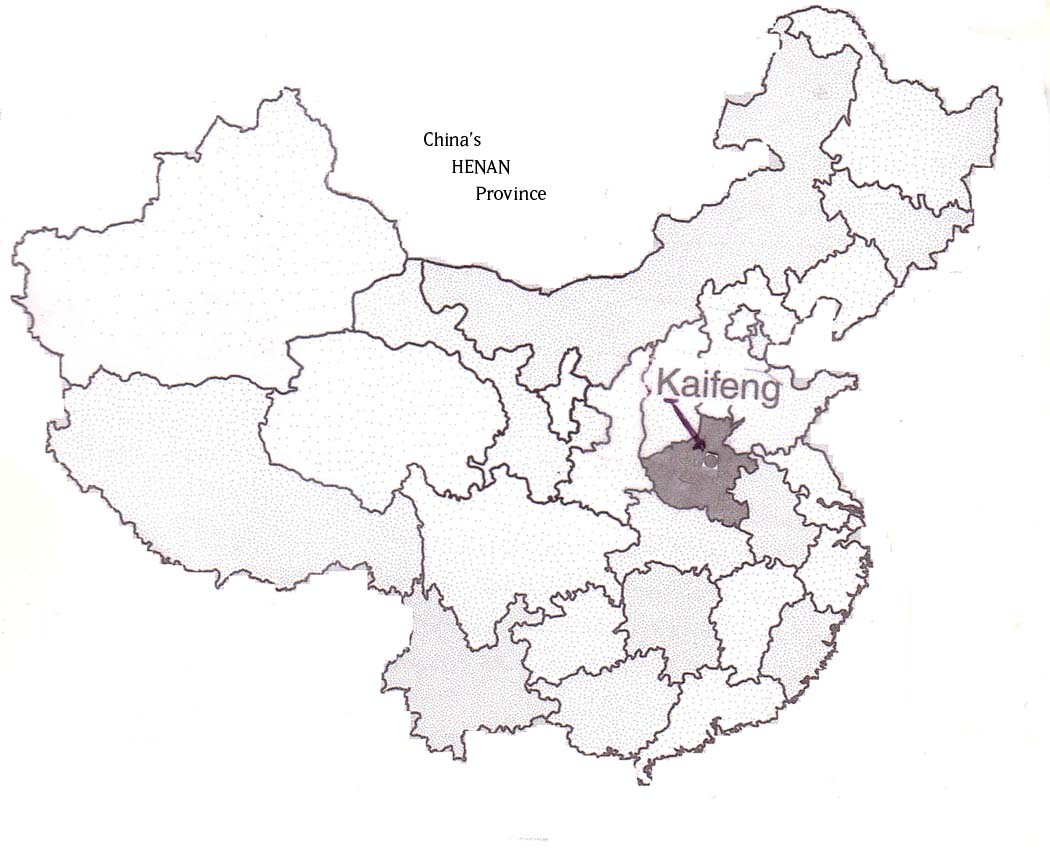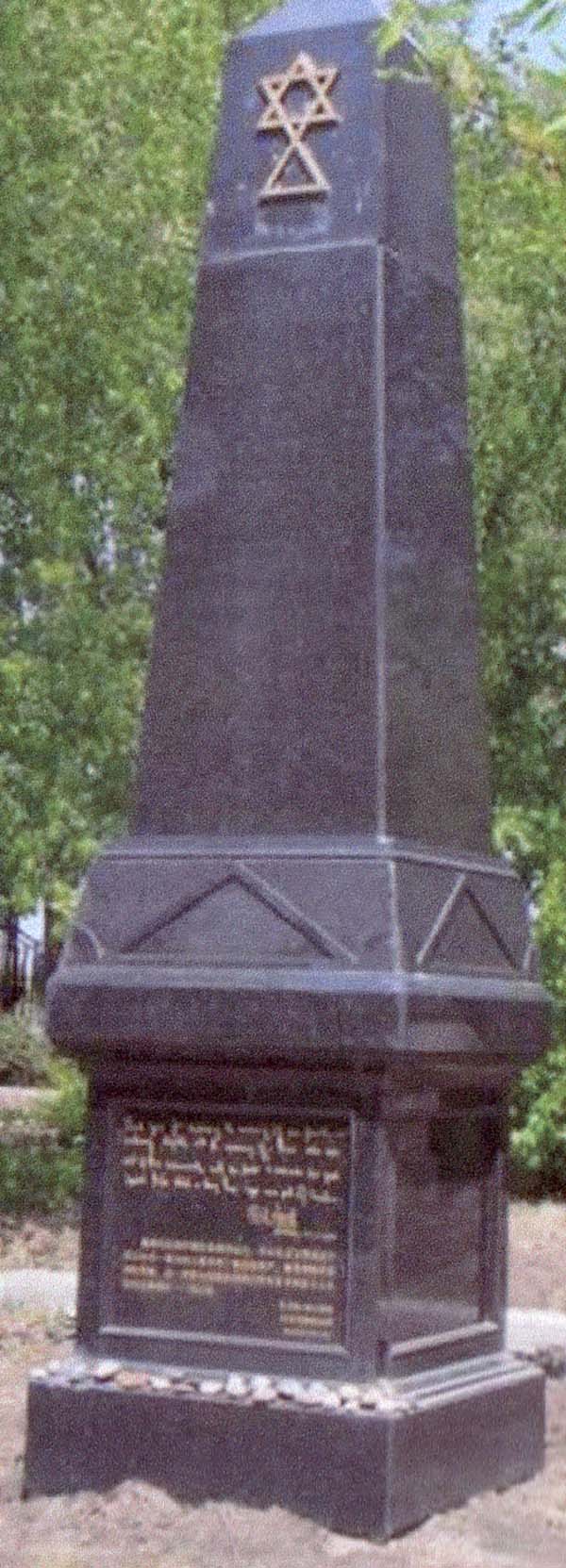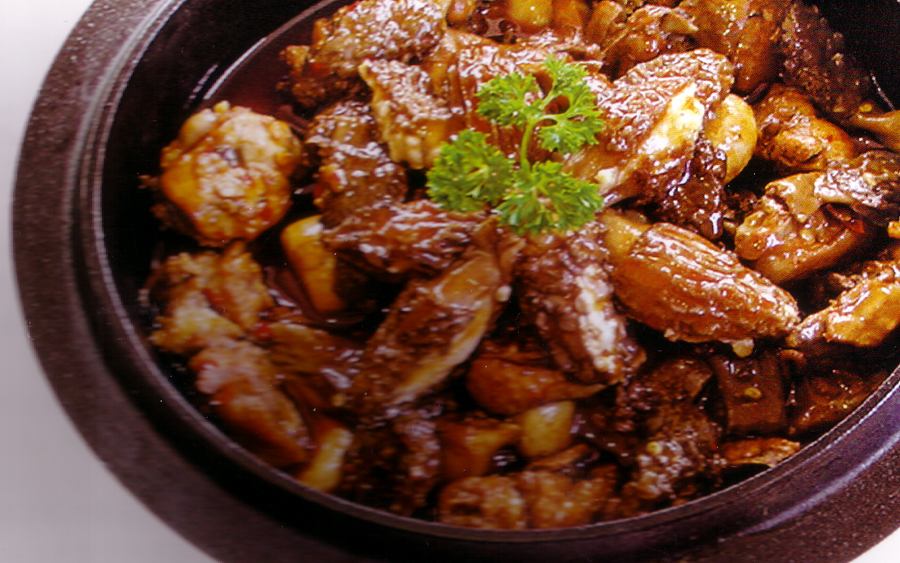
| What is Flavor and Fortune? |
| How do I subscribe? |
| How do I get past issues? |
| How do I advertise? |
| How do I contact the editor? |
Read 13146400 times
Connect me to:
| Home |
| Articles |
| Book reviews |
| Letters to the Editor |
| Newmans News and Notes |
| Recipes |
| Restaurant reviews |
| Article Index (all years, slow) |
| List of Article Years |
| Article Index (2026) |
| Article Index (last 2 years) |
| Things others say |
| Related Links |
| Log In... |
| Authors |
| Categories & Topics |
Kaifeng, Capital and Culinary
| by Jacqueline M. Newman |
Chinese Food in China, Hong Kong, and/or Taiwan
Fall Volume: 2012 Issue: 19(3) page(s): 13 16

 This city is in eastern part of the Henan Province about three hundred miles from Beijing in the Yellow River Valley. More than five million people live here now, earlier it was less populated and still a major center of Chinese civilization. Once the capital of the Kingdom of Wei, also the capital during the Northern Song, likewise in the Jin Dynasty, and it was a capital city in other dynasties. Actually, this city was China's capital city seven different times. Historians believe it was particularly important during the Northern Sung Dynasty (960 - 1126 CE).
This city is in eastern part of the Henan Province about three hundred miles from Beijing in the Yellow River Valley. More than five million people live here now, earlier it was less populated and still a major center of Chinese civilization. Once the capital of the Kingdom of Wei, also the capital during the Northern Song, likewise in the Jin Dynasty, and it was a capital city in other dynasties. Actually, this city was China's capital city seven different times. Historians believe it was particularly important during the Northern Sung Dynasty (960 - 1126 CE).
Not always known as Kaifeng and near the Wo, Huiji, and Jiaolu rivers, it was once called Bian. Some still use that name while others remember it as Daliang, Bianjin, Dongjing, and other names from its past. The last time it was the capital was during the Jin conquest of 1127. It remained so for some time thereafter, except a short time during a Mongol attempt to take it over in 1214 CE. Kaifeng, seen on the map is in the province once spelled Honan. It was written about in Flavor and Fortune's Volume 18(4) on pages 12, 13, and 19.
During the period of Five Dynasties and Ten Kingdoms and during Ten Kingdom times, (907 - 960 CE), Kaifeng was said to be the largest city in the world. It succumbed to northern Jurchen invaders in 1142, as did much of Northern China; then many residents left or were killed. Ceded to the Jin it became Jurchen's southern capital in 1157 CE. In 1279, when the Mongols took over and when the Ming came to power in 1368 CE, Kaifeng remained the country's capital.
No longer the country's capital, not even the capital of its province, that city is Zhengzhou. It moved there in 1954. Thus, Kaifeng has declined in recent years, sometimes for these reasons, others as one flood or another ravaged this city. The worst flood was near the end of the Ming Dynasty. In 1642 CE, a Yellow River dike was destroyed by Ming forces and this caused the death of nearly four hundred thousand people.
 When visiting this city, think positive and get to see the Iron Pagoda. This ancient landmark is hard to miss, looking at its picture shows why. Also visit the Lord Bao Temple, a Sung Dynasty delight. The Xiangguo should be seen, as well, it is revered by Buddhists world-wide. And, do not miss the Dragon Pavilion, the Qingming Landscape Garden, local museums, and the Imperial Song Dynasty Street; all should be on your travel agenda.
When visiting this city, think positive and get to see the Iron Pagoda. This ancient landmark is hard to miss, looking at its picture shows why. Also visit the Lord Bao Temple, a Sung Dynasty delight. The Xiangguo should be seen, as well, it is revered by Buddhists world-wide. And, do not miss the Dragon Pavilion, the Qingming Landscape Garden, local museums, and the Imperial Song Dynasty Street; all should be on your travel agenda.
The Museum of Kaifeng was robbed a few years back and might reopen soon. If it is, visit to learn of this city's unique history. In the meantime, read an article by Dr. Beverly Friend, executive director of the China Judaic Studies Association at http://haruth.com/jw/Asiankaifeng.html It is not just about the museum, it provides excellent background, references too, about the city and some of inhabitants during the Ming Dynasty (1368 - 1644 CE).
At that time, and by Imperial decree, the Ming emperor gave Jews one of the seven surnames. These included: Ai, Lao, Jin, Li, Shi, Zhang, and Zhao. Jin and Shi are equivalent to the names Gold and Stone, both popular in the Western world.
Jews were not new to Kaifeng or elsewhere in China. Many migrated there as early as 700 CE, probably as travelers and traders on what later became known as The Silk Road. Later still, others moved here from Russia, some via Harbin. They had gone there from what was then called Persia, now known as Iran. Others came then or later from India and Iraq.
It is interesting to note that this city has the largest and best preserved Jewish cemetery in the Far East. Called the Harbin Huang Shan Jewish Cemetery, it was built in the center of the city in 1903, but in 1958 was moved outside the city and then it was renovated in 1992. That was after relations were established between China and Israel.
 Visit and see tombstones in Hebrew, Yiddish, Russian, even English; Ehud Olmert did. He was once Israel's Prime Minister. He visited there in 2004 and placed a rock on his deceased grandfather's tombstone. That was and still is a custom among eastern European Jews. Olmert's grandfather died in Harbin in 1941 and his remains were later moved here. Now this large stone steele stands near his grave. In English it says "thank you for protecting the memory of our family, and restoring dignity into the memory of those who were part of this community." It also says "... a good Jewish life which a long time ago were part of Harbin."
Visit and see tombstones in Hebrew, Yiddish, Russian, even English; Ehud Olmert did. He was once Israel's Prime Minister. He visited there in 2004 and placed a rock on his deceased grandfather's tombstone. That was and still is a custom among eastern European Jews. Olmert's grandfather died in Harbin in 1941 and his remains were later moved here. Now this large stone steele stands near his grave. In English it says "thank you for protecting the memory of our family, and restoring dignity into the memory of those who were part of this community." It also says "... a good Jewish life which a long time ago were part of Harbin."
Immigrant Jews helped Kaifeng flourish for about seven hundred years. They built a synagogue here in 1163 and erected a different steele or memorial pillar that same year. It is still in Kaifeng but inside the temporarily closed museum. Another steele, dated 1421 celebrates a turning point for Jews in China as that year they gained acceptance in Chinese society and were allowed to take civil service examinations. Those that passed these examinations were allowed to enter government professions.
Ustad Leiwei, ustad means rabbi in Persian, was given charge of the Jews early on. He arranged to build the synagogue, also a study hall, ritual bath, communal kitchen, place to butcher animals observing kosher principals, and a sukkot, all in Kaifeng. After a devastating flood in 1642, these edifices needed and were rebuilt. Some say this was with aid from a government official, perhaps himself a Jew. A cylindrical torah case, two stone bowls, a drain for washing before worship, and copies of these steeles are on view at the Royal Ontario Museum in Toronto, Canada. Years back we saw them there and foolishly did not take photographs.
Jews in Kaifeng and throughout China, were not a large population, but they were accepted. The Chinese knew them as tiaojinjiao, and they referred to themselves as Youtai for Judah; they were proud of this designation. Most Jews wrote it on their own and their children's identity cards
Jews lived in Kaifeng until the 1850s, and then started leaving China as their synagogue was no longer in good shape. Other conditions for them were less favorable as their temple was dilapidated. By the 1860's their beloved synagogue no longer existed. Today, a hospital stands on its site. Kaifeng's old city walls were also in serious decay at that time and in the late 1860s, these walls became less important because the city had expanded beyond them.
It was not until 1302 that the first Jew in China was written about. It was by a Jesuit priest named Matteo Ricci who had visited one Jew there named Ai. Marco Polo wrote about another Jew a bit later. Most of the youtai ren or 'people who extract the sinew' as they were also known then, kept kosher. They did remove the sinew when preparing their meat, and in those days they did get along with their neighbors.
Today there are no Jews in Kaifeng, though some people there do believe their ancestors were Jews. They believe these forebears later married non-Jews. Without matrilineal heritage, most are no longer thought of as Jews, though a few still say they are. Forever a small population, the Jews did influence foods eaten in Kaifeng and in the entire province through their Middle-eastern and Russian backgrounds. A few of their dishes remain, more of their tastes do, too.
 Kaifeng and the surrounding area is the birthplace of Henan food. Known as Yu cuisine. This imperial cuisine was said to begin during the Northern Sung Dynasty. It is characterized by its salty taste, colorful appearance, little use of oil, much use of flour, and absence of fruits. Beyond salt, sugar, pepper, and a few other seasonings, tastes here include ginger, cardamon, garlic, and vinegar. Foods are mainly wheat-flour products, vegetables, some fish, meat, mushrooms, and eggs. In the past, wealthy folk did eat more meat and fish dishes, drank lots of wine, and indulged in special local foods. As in the rest of China, poor folk were glad to get enough to eat and foraged for mushrooms as in this dish made with tripe. Its recipe is in this issue.
Kaifeng and the surrounding area is the birthplace of Henan food. Known as Yu cuisine. This imperial cuisine was said to begin during the Northern Sung Dynasty. It is characterized by its salty taste, colorful appearance, little use of oil, much use of flour, and absence of fruits. Beyond salt, sugar, pepper, and a few other seasonings, tastes here include ginger, cardamon, garlic, and vinegar. Foods are mainly wheat-flour products, vegetables, some fish, meat, mushrooms, and eggs. In the past, wealthy folk did eat more meat and fish dishes, drank lots of wine, and indulged in special local foods. As in the rest of China, poor folk were glad to get enough to eat and foraged for mushrooms as in this dish made with tripe. Its recipe is in this issue.
People in the United States who visited Kaifeng and books written about this city say the Four Treasure Dish, written about and shown in Flavor and Fortune's Volume 19(1) on its cover and on page 23, say it is the most famous dish from this city. Steamed Ribs with Bamboo Shoots is another, and Sweet and Sour Carp with Noodles, the third most well-known dish from Kaifeng. Many told us that their xiao long bao are better than those in Shanghai, their Deep-fried Bean Jelly, the best in China. They say their Steamed Pie is tops, Mutton on Skewers great, and Almond Tea is not to be missed.
Someone standing nearby, when we were told these things chimed in that everyone should taste their Mashed Sweet Potatoes made with sugar and flower petals, their Glutinous Rice Cakes, Chicken in a Bucket, and other foods originating in this city. They went on to say these foods are better in Kaifeng than anywhere else in China, as are their breads, noodles, and snack foods. They told us to go to their night markets and snack streets and taste them ourselves.
Two chaps said to tell our readers the best snack foods are near the Drum Tower, to taste them and to enjoy their many other Yu dishes. One gent said to advise readers to look up before entering any restaurant in Kaifeng as there one sees foods the particular eatery specializes in. They are often illustrated on their doorways or on a decorative arch above the entranceway.
When in New York City, take the Number 7 subway to eat the Kaifeng dish described by Michael Gray in Volume 19(1). Keep in mind it needs two-days advance notice when ordering, that the restaurant is in Elmont, and it is called Uncle Zhou. This Four Treasures Wrap dish was originally prepared for Empress Cixi, made as a tribute to and for her. The Chinese called it Tao Si Bao, and they know it looks like an ordinary steamed duck. But ordinary it is not, as inside the duck is a boneless chicken, inside that a boneless pigeon, and inside that a boneless quail with a super stuffing.
Many different stuffings can be found in the innermost bird. One recipe we read calls for two scallops, a small amount of sea cucumber, some ham, mushrooms, squid, green beans, and rice wine. Another includes all of these plus shrimp, peas, and cooked rice. Still another says to use other ingredients. This four treasure dish first made during the Qing Dynasty (1644 -1911 CE) was designed by Chef Chen Yongxiang and his brothers. With several generations of skill, they were known for three hundred other dishes, most still loved and sought after in Kaifeng.
This particular treasure starts by removing feathers and innards. At this Uncle Zhou Restaurant reported and with many pictures, as seen in Volume 19(1), and available in Kaifeng, they use live poultry, soak it for two or more hours, then debone and stuff the birds one into the other before steaming them for six hours. To serve, they cut through to the center one at a time, serve soup first, then the duck. Next the chicken is served with its stock followed by the pigeon and its stock, and finally the quail and its stuffing and soup. After every bird, the remainder of its meat is plated and placed on the table for anyone with room for more. The birds and all the soups are fresh tasting, and have lots of fine flavor, wonderful aroma, and good taste.
Another famous Kaifeng dish, Steamed Rib with Bamboo Shoot, needs to be boiled or steamed with sliced bamboo shoots in a strong stock until soft and fragrant. Sweet and Sour Carp, written about and pictured in Volume 18(4) on page 12 is also from Kaifeng as is Kaifeng Chao Liang Fen, a deep-fried mung bean jelly or jellied fungus seasoned with soy sauce, shallots, and ginger. There are other special Kaifeng dishes including Baked Sweet and Sour Carp Noodles, and Stir-fried Three Crisps made with chicken gizzards, pork tripe, jellyfish, mushrooms, bamboo shoots, peas, and many seasonings.
People from Kaifeng love snacks including Soupy Steamed Bun Yipin, a dish once called The Academy Bun, so called we never learned why. They adore Chongyang Cakes, Oil Cakes with Onions, Pan-fried Buns stuffed with mutton, Fried Bean-starch Noodles, Baked Wheat Cakes, and Almond Tea. A recipe for their Almond Tea is in Volume 19(1) on page 37.
Many of these and other Kaifeng dishes originated as early as the Tang Dynasty (618 - 907 CE). Others became popular during the Song Dynasty (1115 - 1234 CE). All can be tasted in many places throughout China. The Henan restaurants in Elmont and Flushing, and the one in Manhattan's Chinatown have many of these dishes on their menu or available on special order. The two Queens eateries boast about their Henan foods. This magazine wrote about them in Volumes 18(2) and 18(4) on pages 22, and pages 12-13, respectively; do read them both. They are meeting places for Henan ex-pats going there to enjoy tastes of Kaifeng and Henan. Both have fine fascinating Henan foods.
The recipes below allow you to make some of the foods of this city and the entire province at home. Enjoy them all!

Copyright © 1994-2026 by ISACC, all rights reserved
Address
3 Jefferson Ferry Drive
S. Setauket NY 11720